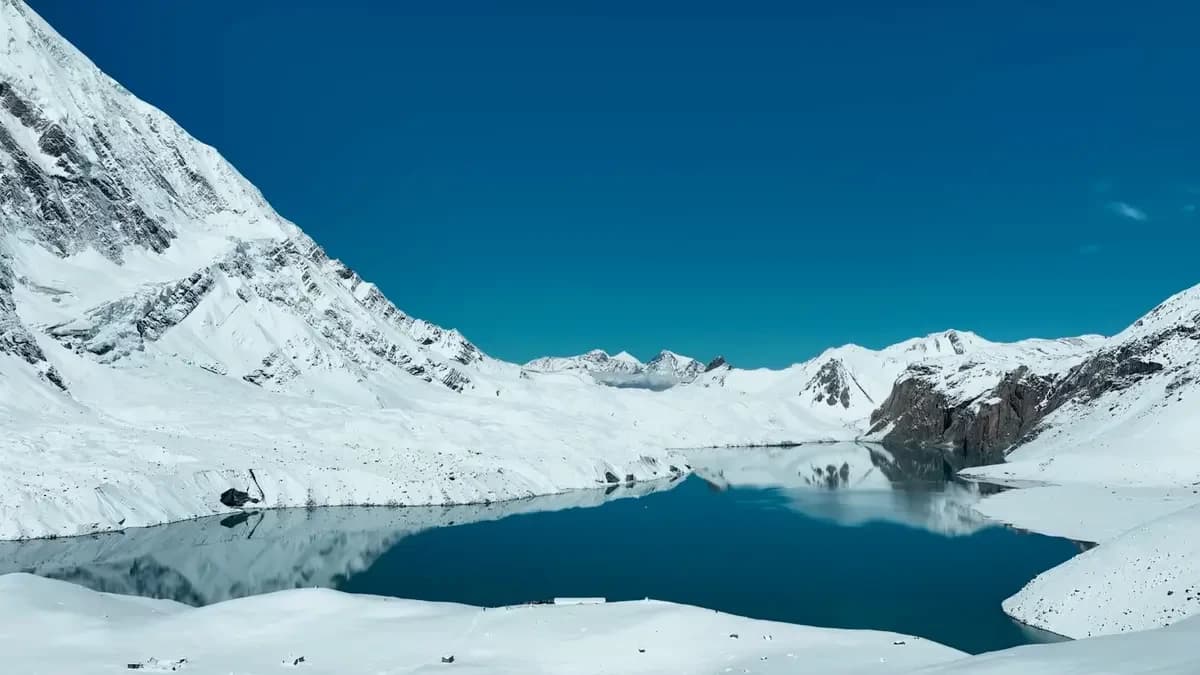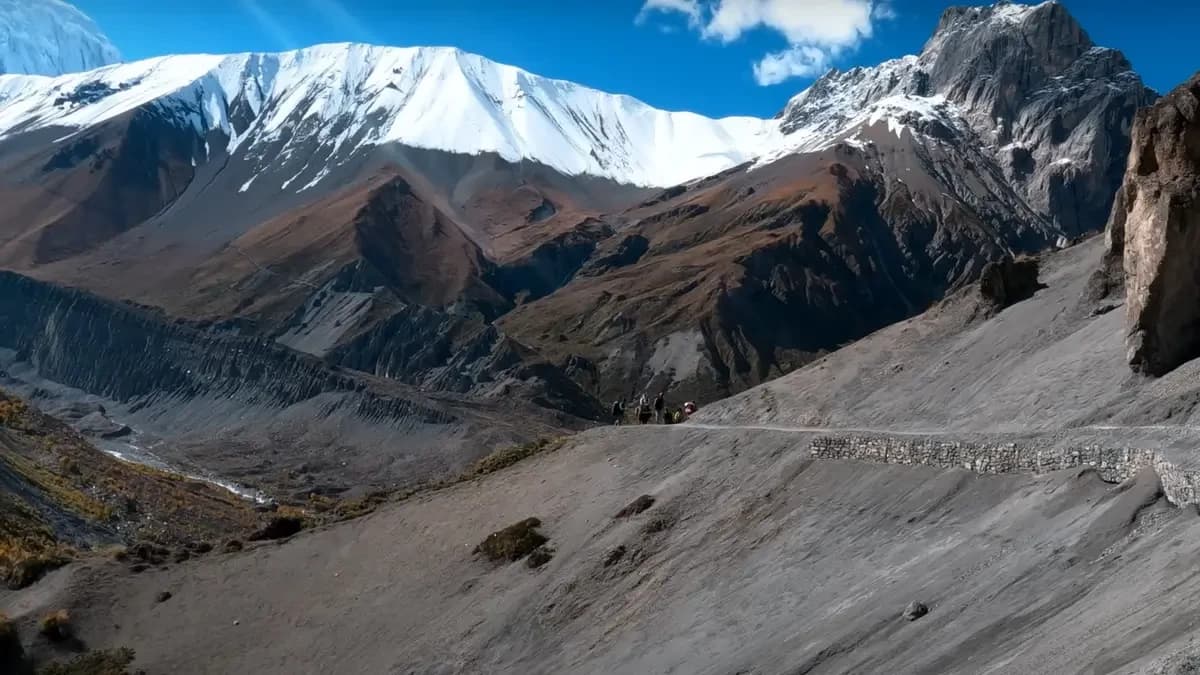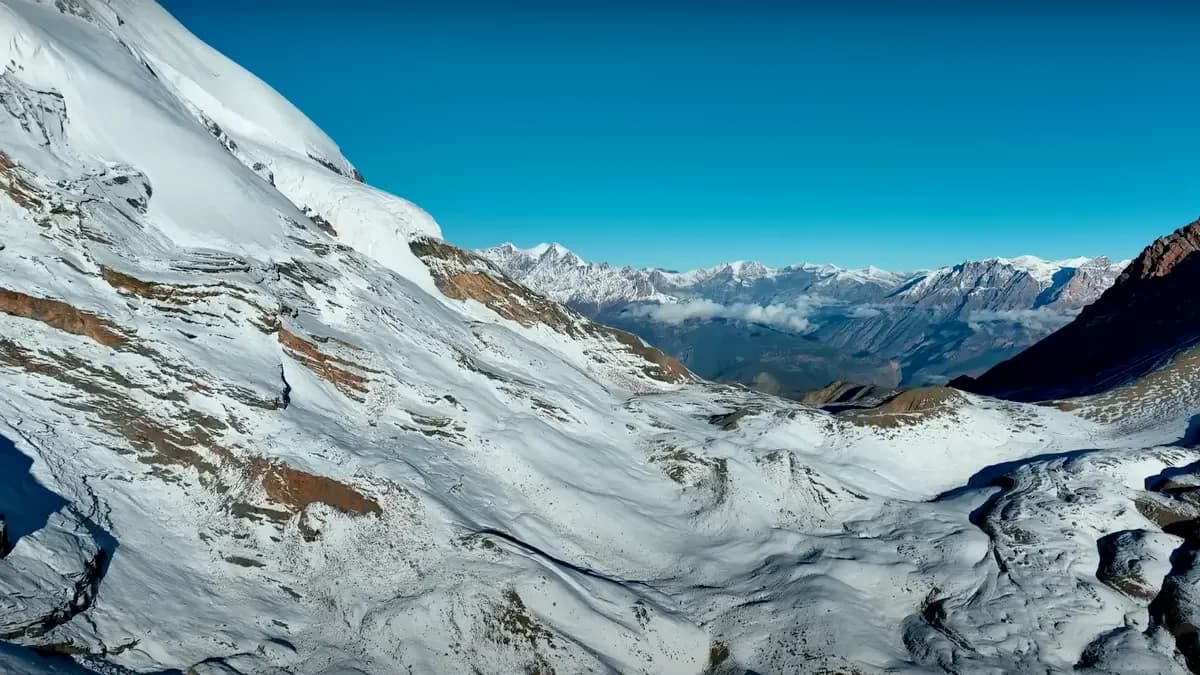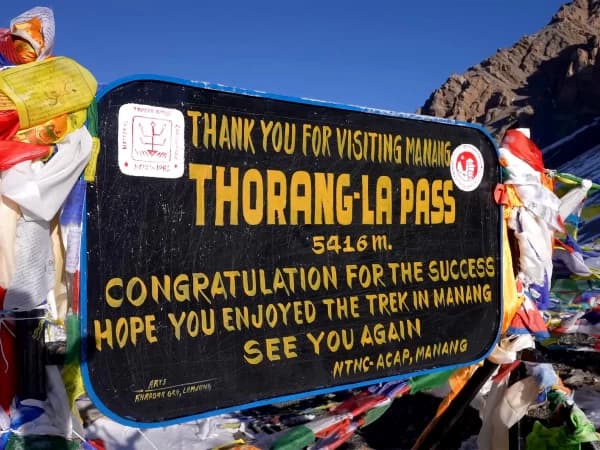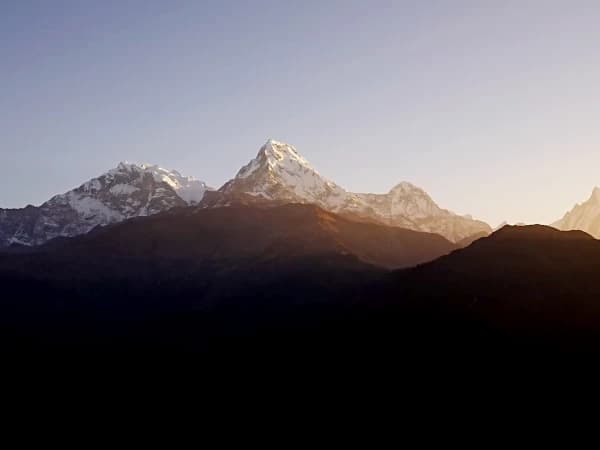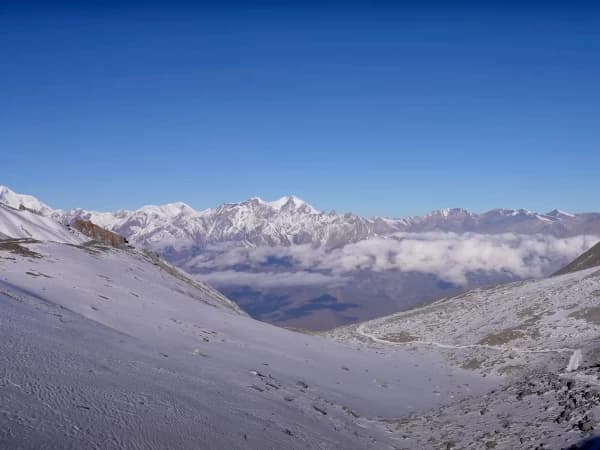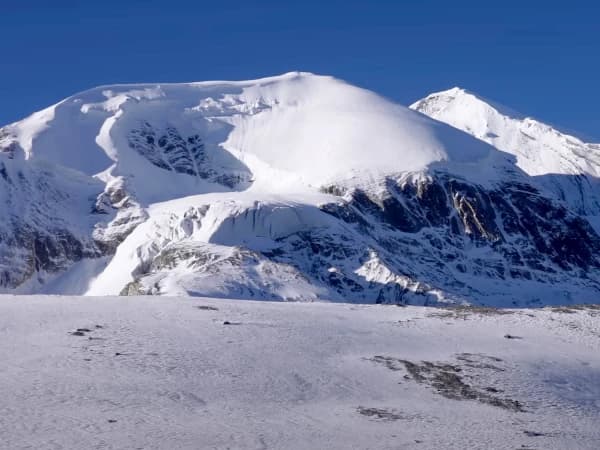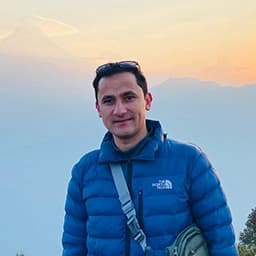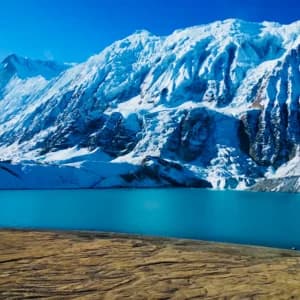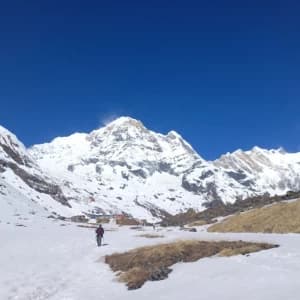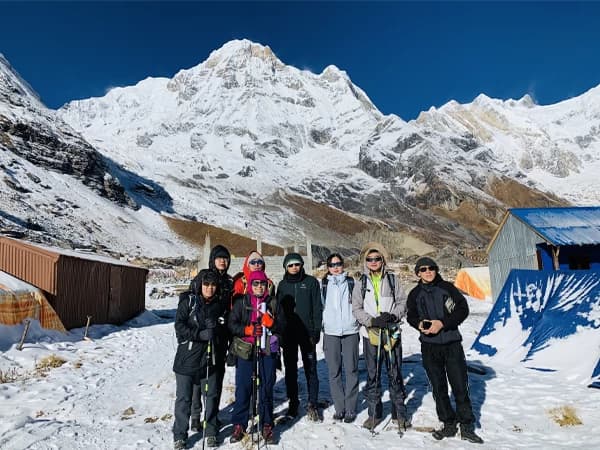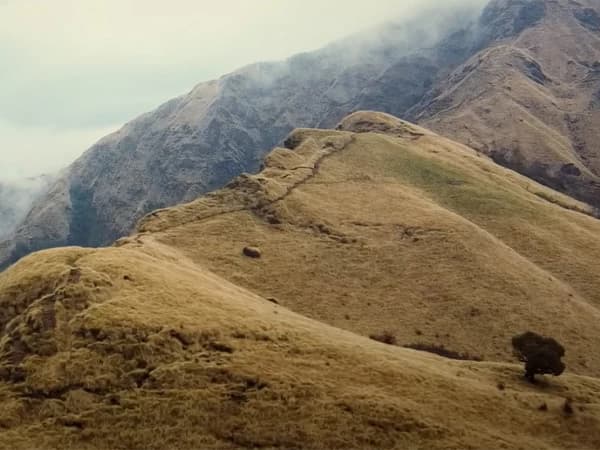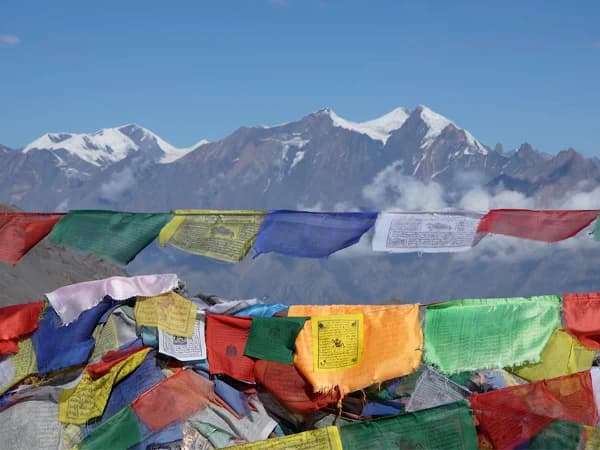The Annapurna Circuit Trek is a fascinating journey through breathtaking landscapes in the Himalayas. Which have some of the most magnificent terrains in the world. With a distance of about 160-230 kilometers, this well-known trek passes through the dense subtropical forests as well as the high-altitude desert. Annapurna Circuit trek is a well-known trekking trail. Which is the most stunning trek route in the world? Trekkers will have the chance to discover the high passes, towering mountains, alpine meadows, lush forests, local cultures, flora, and fauna. Trekkers will explore the beautiful nature of the Himalayas, which is a great opportunity for those who are mountain and nature lovers.
In this majestic and thrilling mountain trek, you will hike through beautiful villages with some of the most diverse and fascinating cultural experiences. You will be trekking in the Annapurna Conservation Area, which is home to endangered animals, such as the Chinese Pangolin, Kashmir Musk deer, Himalayan Musk deer, and Vulnerable species such as the Snow Leopard, Clouded Leopard, Red Panda, and Himalayan Black Bear.
This adventurous trek circles the towering mountains. Offers the scenic sights of eight-thousanders, including Annapurna I (8,091 m) and Dhaulagiri I (8,167 m). While at the same time vibing into the culture of the beautiful people from Gurung, Magars, Thakali, and Tamang communities.
Highlights - Annapurna Circuit Trek
- Stunning views of Annapurna I (8,091 m), Dhaulagiri I (8,167 m), and Machhapuchare (6,993 m) peaks.
- Hike through dense woods and forests, elevated desert-like terrain, and alpine pastures.
- Tea house accommodation and experience the traditional Gurung and Thakali Culture
- Accomplish the challenging Thorong La Pass trek with an altitude of 5,416 meters (17,769 feet).
- Trek to Tilicho Lake, one of the world’s highest-altitude lakes with turquoise-colored waters.
- Take in a natural hot spring bath which is helpful when you are tired from hiking.
- Find yourself on terraced rice fields as well as rocky steep slopes in high-altitude treks.
- Opportunity to sight endangered animals such as the Chinese Pangolin, Kashmir Musk deer, Himalayan Musk deer, Snow Leopard, Clouded Leopard, Red Panda, and Himalayan Black Bear.
The Annapurna Circuit Trek is quite an interesting combination of adventure and emotional gratification. The presence of captivating landscapes, rich cultural experiences, and the entity of the Himalayas in the backdrop makes it an experience to be cherished all lifelong.
Annapurna Circuit Trek Overview
This exciting journey starts with a drive from Kathmandu to Dharapani via Bensi Shahar and then the next day hike to Chame. The initial parts of the trek allow you to be engrossed in the culture and breathtaking scenery before eventually descending onto the trails. Continuing from Dharapani, the hike proceeds to Chame and then to Upper Pisang for the night, eventually arriving in Manang. Each day presents a new scene, from emerald forests to terraces of fields, making every step of the trek visually rewarding.
On the seventh or eighth day of the trek, you will reach Manang and be able to enjoy a well-deserved rest day. This is a chance for acclimatization and the exploration of nearby attractions, such as Gangapurna Lake. Continuing from Manang to Sri Kharka, onward to Tilicho Base Camp, one should not miss the high-altitude lake of Tilicho Lake. With each step, this trek makes the climb up to Thorong La Pass more spectacular.
One of the major accomplishments and breathtaking views of the surroundingHimalayas range is reaching the Thorong La Pass, which rests at an altitude of 5,416 meters. Then, you descend to Muktinath, a spiritually rich region. After exploring Muktinath, the trek continues to Jomsom, from where a jeep takes you to Tatopani to relax in the natural hot springs. Continuing the journey to Tadapani a place of extreme fame for its captivating sunrise view of the Annapurna range. You will conclude this beautiful yet adventurous trek in the vibrant city of Pokhara and head back to Kathmandu.
Annapurna Circuit Trek with Stunning Tilicho Lake View
On the ninth day of this fascinating Annapurna circuit trek, you will have a stunning view of Tilicho Lake, which is immensely captivating for the trekkers. Lying at an altitude of 4,919 meters above sea level, the turquoise-colored waters of the lake glitter in the sun and emerge as a vibrant entity against the snow-capped peaks and mountains. While approaching Tilicho Lake, the trekkers hike through various landscapes, from rich green valleys to arid high-altitude environments which increase the adventurous feeling.
Upon arrival, the trekkers are greeted by the peaceful atmosphere of the lake, inviting them to stop and marvel at the fantastic views. Very often referred to as one of the highest lakes in the world, it reflects a different view of the majestic Himalayas. Thus, providing an ideal backdrop for capturing photographers and cherished moments of reflection and contemplation. Wildflowers bloom along the shores, adding their vibrant hues to the rugged landscape. Tilicho Lake at its finest moment captures the very essence of the Annapurna Circuit. This trek is definitely a journey with extreme physical challenges at its base and profound depths in the beauty of nature.
Benefits of Booking Annapurna Circuit Trek with Touch Planet Treks
- Free airport arrival and departure transfers from/to the hotel on private transport.
- Easy booking and reservation system.
- Complementry map of Annapurna Circuit Trek.
- 24/7 phone communication at+977 9841774591
- Touch Planet Treks T-Shirt (to keep) and a Duffle Bag (for trekking Duration).
- Free first-aid medical kit, our team leader will carry during the trek
- Free Excess Luggage is Stored at Touch Planet Treks during the trips.
How difficult is the Annapurna Circuit Trek?
The Annapurna Circuit Trek is a pretty adventurous trek due to its high altitude, diversified terrain, and long duration. Reaching as high as 5,416 meters, Thorong La Pass. Acclimatization should be done by the trekkers to avoid altitude sickness. Hence, rest days are usually planned in Manang. The physical fitness of an individual may be put to task as daily hiking might take 5 to 8 hours with 10 to 20 kilometers. It ranges from trekking on hard rocky paths to climbing through lush valleys. The weather conditions can be unpredictably changed, especially during monsoon. This is a 12 to 20-day trek where the trekkers have to respect the culture of the locals while moving through the villages. If you are well prepared and aware of the risks, this dream route of every trekker will lead you forward with breathtaking views and humbling cultural encounters.
Best Time for Annapurna Circuit Trek
The best time for the Annapurna Circuit Trek is during the autumn season, months of September to November, though trekking in October is considered as peak season. Usually, the weather is clear, and the view of the Himalayas is brilliant because the air is cleared by the monsoon. The spring, starting from March up to May, is also a good time, as temperatures are warmer and blooming rhododendrons. However, starting from June up to August, the monsoon rains heavily and makes it hard for you to trek. Hence it is not recommended to trek in monsoon season. The best seasons to trek in Annapurna Circuit are during autumn and spring.
Autumn: (September to November)
During the autumnseason September and October are the peak months for trekking. The weather is usually clear at this time of year, clear air, and the views of the mountains are spectacularly visible. The trails have just been recently washed by the just-ended monsoon, so they are well-maintained. Therefore, conditions are usually good to hike in the autumn season. However, in these areas, teahouses are crowded especially around Manang.
Spring (February to April)
Springis a very good time, as the temperatures become warmer, the rhododendrons are in bloom, and fabulous landscapes for the trek. The spring season falls in Nepal the month of March to May. The weather is nice, though late May gets some pre-monsoon rainfall. It's less crowded than during peak autumn time.
Winter (November to January)
While trekking is possible, expect colder temperatures and the possibility of snow, especially higher up. In January, one should expect heavy snowfall, which might make the Thorong La Pass risky and sometimes impossible to pass.
Monsoon (June to August)
During that time, heavy rainfall usually happens, increasing the danger of landslides and obscuring mountain views. Generally, in these months, it is not good to go on a trek.
In other words, the best times for the Annapurna Circuit Trek include the months of September to November in autumn and the months of March to May in spring. During which beautiful sceneries with favorable trekking conditions unfold.
Permits Required for Annapurna Circuit Trek
To begin the trek to the Annapurna Circuit, you must get two permits: the TIMS permit and the ACAP. Both of these permissions are required to complete the Annapurna Circuit Trek legally and safely. As with other national parks, there will be various checkpoints along the route where you must present your permits.
A TIMS permission is required for all hikers traveling to any trekking region in Nepal. It records the information, which aids with safety and security during your voyage. TIMSlicenses blue cards are NPR 1,000 (about. USD 8) for group hikers and NPR 2,000 (approximately USD 16) green cards for trekkers.
For the TIMS permit, you have to provide:
- A valid passport
- A passport-size photo
The TIMS permit will be available at the offices of the Nepal Tourism Board, Kathmandu and Pokhara. If you are trekking through an agency that is registered, they would normally make the arrangements for the permit.
Annapurna Conservation Area Project
This permit is compulsory for all trekkers entering the Conservation Area of Annapurna, which plays a very important role in nature and cultural heritage protection and also promotes some kind of sustainable tourism practices in this area. Foreign trekkers need to pay 3000 NPR, approximately $25 US dollars, as the cost of ACAP. You can get the ACAP from the offices of the Nepal Tourism Board or the entry points to the conservation area.
As with every other trek in the Annapurna region, you will be required to have both the TIMS and the ACAP permits for the Annapurna Circuit Trek. It also assists in the identification of the trekkers within the area.
Annapurna Circuit Trek Cost 2025
Annapurna Circuit Trek costs between USD 1300 to 1800 USD in 2025 depending on group size at the time of booking. The package generally covers accommodation, meals, an experienced guide, and necessary permits. Please have a look at our group discount prices below.
- For solo trekkers, Annapurna Circuit Trek costs USD 1,590.
- Group of 2 to 7 trekkers, the cost of Annapurna Circuit Trek is USD 1,495.
- For the trekkers in a group of 8 to 14, Annapurna Circuit Trek costs USD 1,390.
- For a group of 15 to 20 trekkers, the cost of Annapurna Circuit Trek is USD 1,285.
